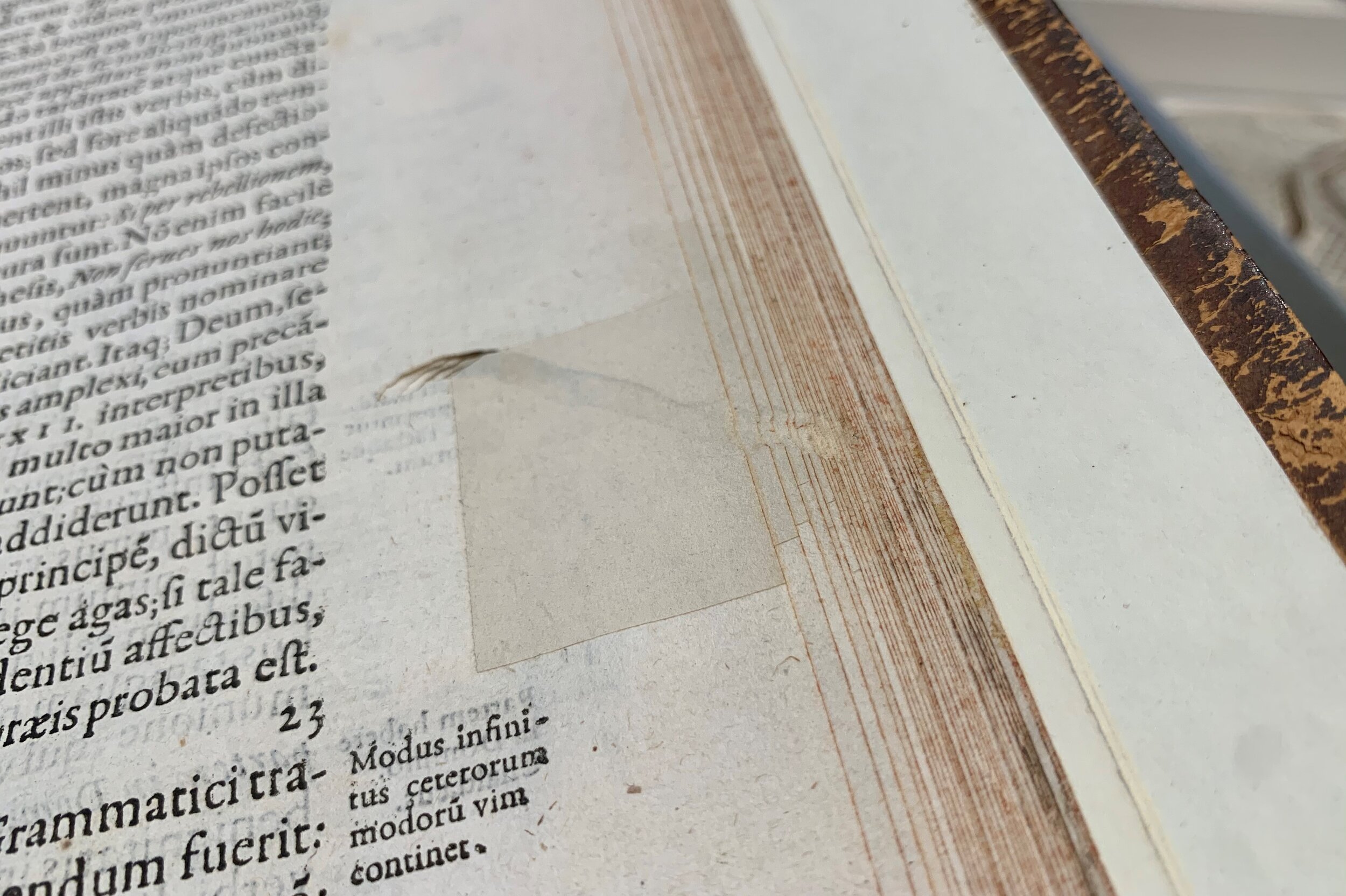Life of a bookworm
/Suzy Micklewright, Team Leader for the Library volunteers, writes about well-known but seldom seen bookworms.
As my background is in libraries I was asked to undertake a stock-check of the Cathedral Library in Rochester in 2009. This started with the Dewey classified books but, inevitably moved on to the pre-1901 section which contains many rare books.
Masius on Joshua, published 1574.
I became completely engrossed in these amazing volumes found in various languages and states of repair. I was browsing one day and came across a re-bound volume called Masius on Joshua, dated 1574 and printed in Antwerp.
A small hole in the title page…
As I was carefully leafing through this polyglot version (when the same text appears in more than one language) I became aware of many holes in the book. These holes became lace-like as the text progressed and I realised I was witnessing the life’s work of a bookworm.
…becomes a long tunnel running the width of the pages.
A curious incident occurred when just a few days later, I came across a book dated 1849 by Beriah Botfield entitled “Notes on the Cathedral Libraries of England”. Mr Botfield, a Member of Parliament for Ludlow in Shropshire, had written a chapter on Rochester Cathedral Library after he had visited and actually mentions:
‘Upon these [the books] the worms seem tacitly permitted to feed, for I found no less than three of these small white grubs, so well known as book-worms, and yet so seldom seen, greedily devouring a black letter folio. It is really astonishing how so minute an animal, with no apparent power of perforation, can drill holes through paper, wood and leather...’
Where the boreholes reach the end of the pages they have been carefully patched.
Imagine my amazement, Mr Botfield was referring to the very same volume I had observed just days before. I tingled as I imagined we had both handled the same book. These two volumes are now displayed together when we do a ‘Show and Tell’ at the cathedral.
A knitted bookworm for use in Show and Tell – in need of a name!
A Note on Bookworms
Rather than relating to one specific beast, the term ‘bookworm’ is a catch-all that generically refers to insects and their larvae that cause damage to books. Common book pests include woodworm (in itself a beetle rather than worm) and their larvae, death watch beetle, moth larvae and silverfish. The insects can be attracted by the leather boards of a book or even the shelves of the library as much as the paper inside the books. Also, the paper in old books was often treated with a ‘size’, a paste-like substance made by boiling animal skin and other tissue. This organic mixture makes attractive eating to the insects.
Past methods of dealing with bookworms included using insecticides or even a fine layer of pepper. Today, libraries favour prevention methods wherever possible. General practices include keeping a stable temperature (silverfish love the damp), keeping the books dust free, not allowing the consumption of food on the premises and the use of pest monitors to be checked on a monthly basis. Mr Botfield’s ‘small white grubs’ sound very like the larvae of the woodworm/furniture beetle. See the National Trust guidance on How to care for paper and books.
Suzy Micklewright
Library volunteer
On close inspection the frontispiece is riddled with ‘bookworm’ bores, although expertly repaired with almost transparent paper.
The conservation of the library collections is an endless but worthwhile endeavor, preserving this unique corpus for future generations. Contact info@rochestercathedral.org to get involved!










